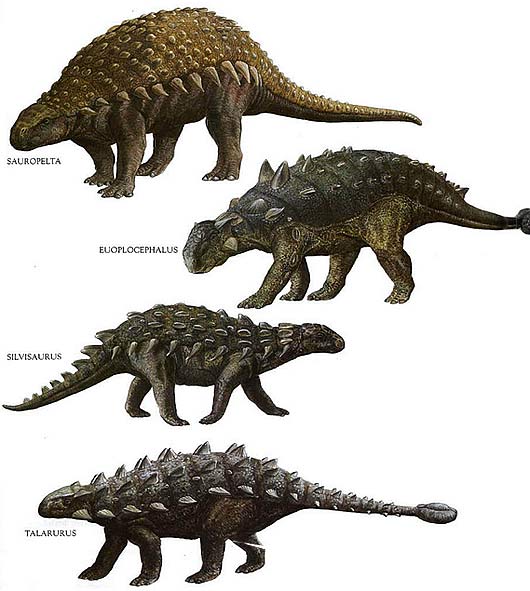Ancient and Extinct Reptile Types – The Dinosaurs
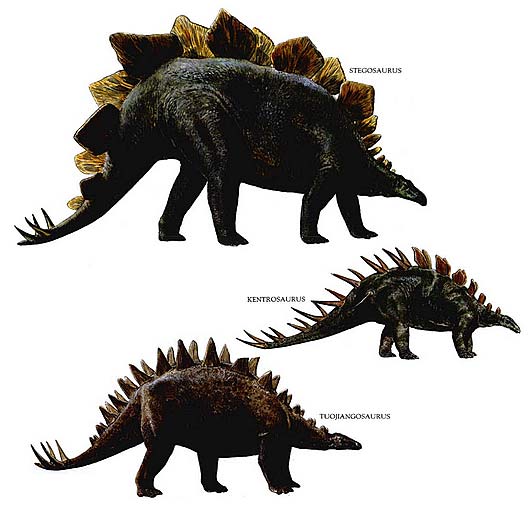
Between 280 and 65 million years ago, a multitude of reptiles occupied ecological niches comparable to those filled by mammals and birds today. With more than 700 species, their remains exhibit an astonishing, often bizarre, variety of form and habit. This “Age of Reptiles” opened in the Permian Age (280-225 million years ago), when early reptiles gained ascendancy over the amphibians, and it lasted throughout the Mesozoic Age (225-65 million years ago). These prehistoric creatures are commonly known as dinosaurs which comes from the Greek meaning – terrible or powerful lizards.

Pelycosaurs (or the descendant group the therapsids), the dinosaurs with large “sails” or “fins” on their backs, were the first big group of dominant reptiles until the thecodonts (later Archosauria), underwent a remarkable evolutionary explosion in the late Triassic period (ending 190 million years ago). Thecodonts spawned the crocodilians, the pterosaurs (flying reptiles) and the dinosaurs that were to dominate the greater part of the Mesozoic era.
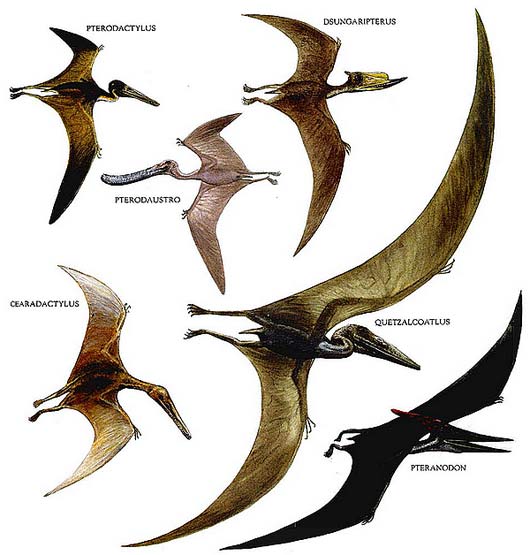
When dinosaur remains were first understood in the modern era around 1820, these animals were viewed as enormous herbivores, which, like modern reptiles (see more about the evolution of modern reptiles here), were cold-blooded and moved with a sprawling gait. Today’s definition of a dinosaur includes some small creatures and many carnivores. Some researchers think that some at least were warm-blooded endotherms. The more modern view is that dinosaurs did not sprawl. Changes in the limbs and girdles allowed some of their thecodontian ancestors to develop a “semi-improved” stance and gait. The dinosaurs themselves reached the “fully improved” stage, with limbs supporting the body from underneath. Some became bipeds, running and walking on their hind legs. The increased agility thus achieved and an increasing size allowed the archosaurs to succeed at the expense of the therapsids in the middle to late Triassic. The earliest archosaurs were all carnivorous. As the first of them reached the dinosaurian level of evolution, the carnivores among the therapsids almost disappeared under the pressure of competition. A few survived and in the late Triassic evolved into the first tiny mammals. Next, selective pressure among the dinosaurian carnivores compelled some to turn to a vegetarian diet, resulting in the demise of the therapsid herbivores.
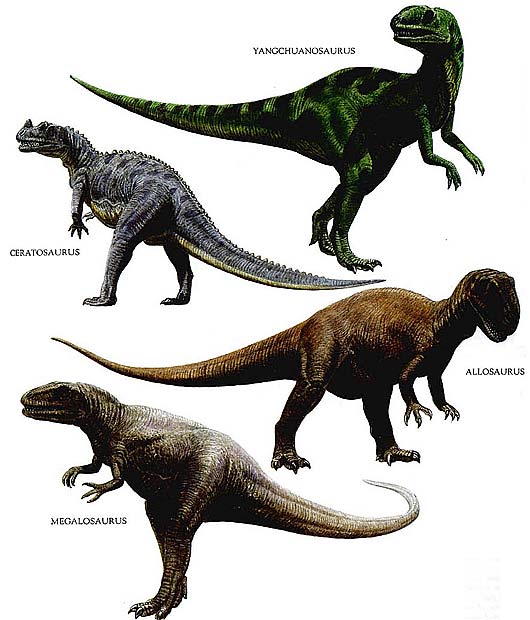
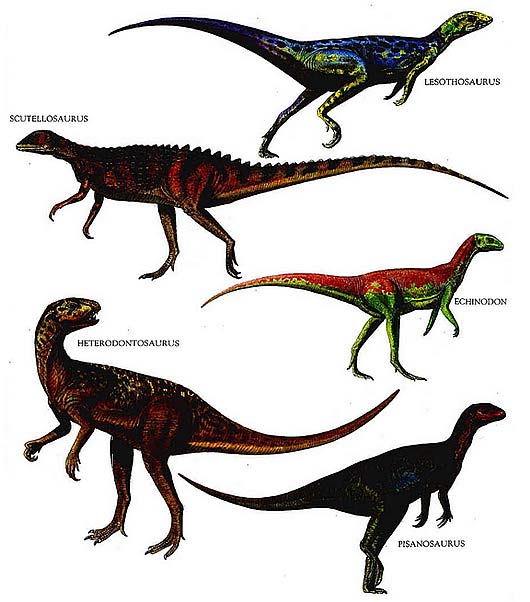
Most dinosaur researchers believe that “fully improved” locomotion evolved independently in three different lines of dinosaurs: the theropods, sauropodomorphs and ornithischians. These groups are sometimes regarded as three separate orders, but it is more customary to classify the theropods and sauropodomorphs together as a single order, the Saurischia. The three groups of dinosaurs remained terrestrial. Flying pterosaurs comprise a separate order of the Archosauria and the aquatic ichthyosaurs and plesiosaurs, prominent in the Jurassic (190-136 million years ago) are even more distantly related, belonging to the subclass Euryapsida. Some dinosaurs may have ventured occasionally into lakes and rivers, but this tendency was not great.
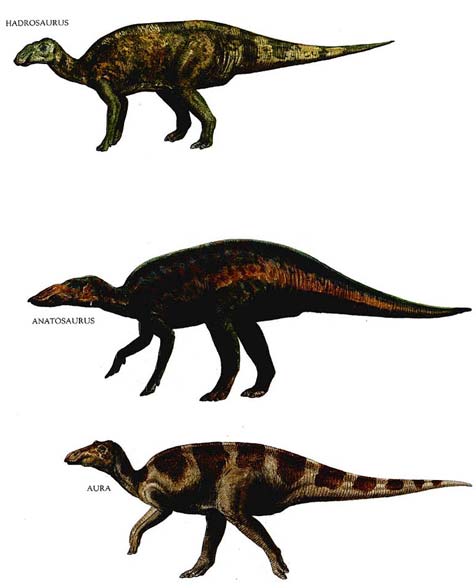
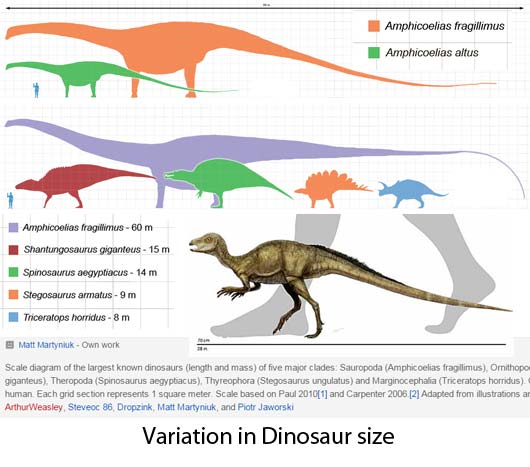
The smallest dinosaur, Mussaurus, was no bigger than a small bird. One of the larger complete skeletons known of is that of a Brachiosaurus – it stood 42ft (12.6m) high and the weight of the animal is estimated at 80 tons. Some fragmentary remains indicate that there were considerably larger creatures. The Amphicoelias is estimated to have been around 130 to 200 ft (40 to 60m) and weighed as much as 135 tons. There were hunting dinosaurs and scavengers, egg-eaters, browsers and fruit-eaters. Some had armored skin, others enormously thickened skulls, horns on the face, crests on the head, bony frills protecting the neck, huge plates along the back, or spikes or a club on the tail. For the most part, each form flourished for only a short time, so that late Cretaceous dinosaurs were very different from their Triassic ancestors.
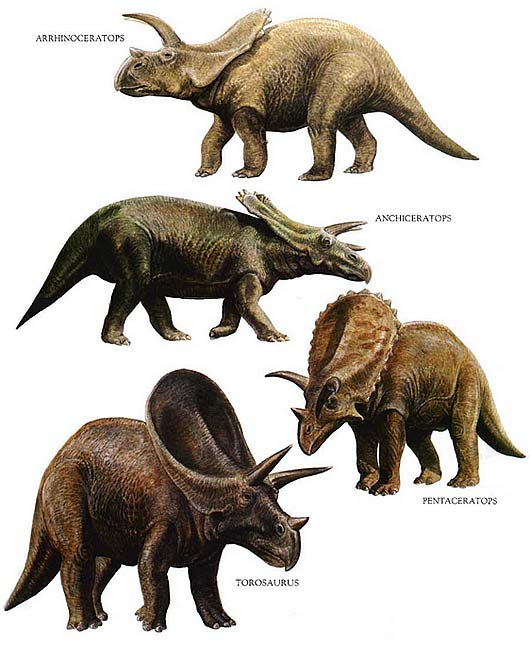
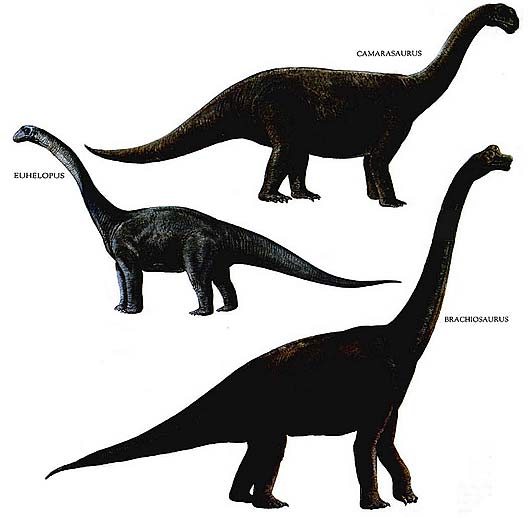
At the end of the Cretaceous period (about 65 million years ago) the dinosaurs became extinct – as did many other groups of organisms. There is much controversy over these extinctions: were they simultaneous world-wide, or did their timing vary from place to place? Were they gradual, or sudden? Were they a normal evolutionary phenomenon, differing only in scale from what is happening all the time, or were they due to some unique catastrophe such as an asteroid hitting the planet, causing major climatic changes? Some 90 different causes have been suggested, but none gives a satisfactory explanation for the extinctions while still allowing for the survival, apparently unaffected, of dozens of other groups living in the same habitats. When the dinosaurs were gone, the tiny mammals which had scurried at their feet were able to evolve new forms to occupy the major land-animal niches; and so, ironically, the dinosaurs were superseded by descendants of the therapsid reptiles that they had displaced in their own rise to dominance. However, the their own descendants may also be alive and flourishing. Archaeopteryx, the oldest known bird (dating from the late Jurassic), may be nothing more than a small theropod dinosaur with feathers and some flying capability.

